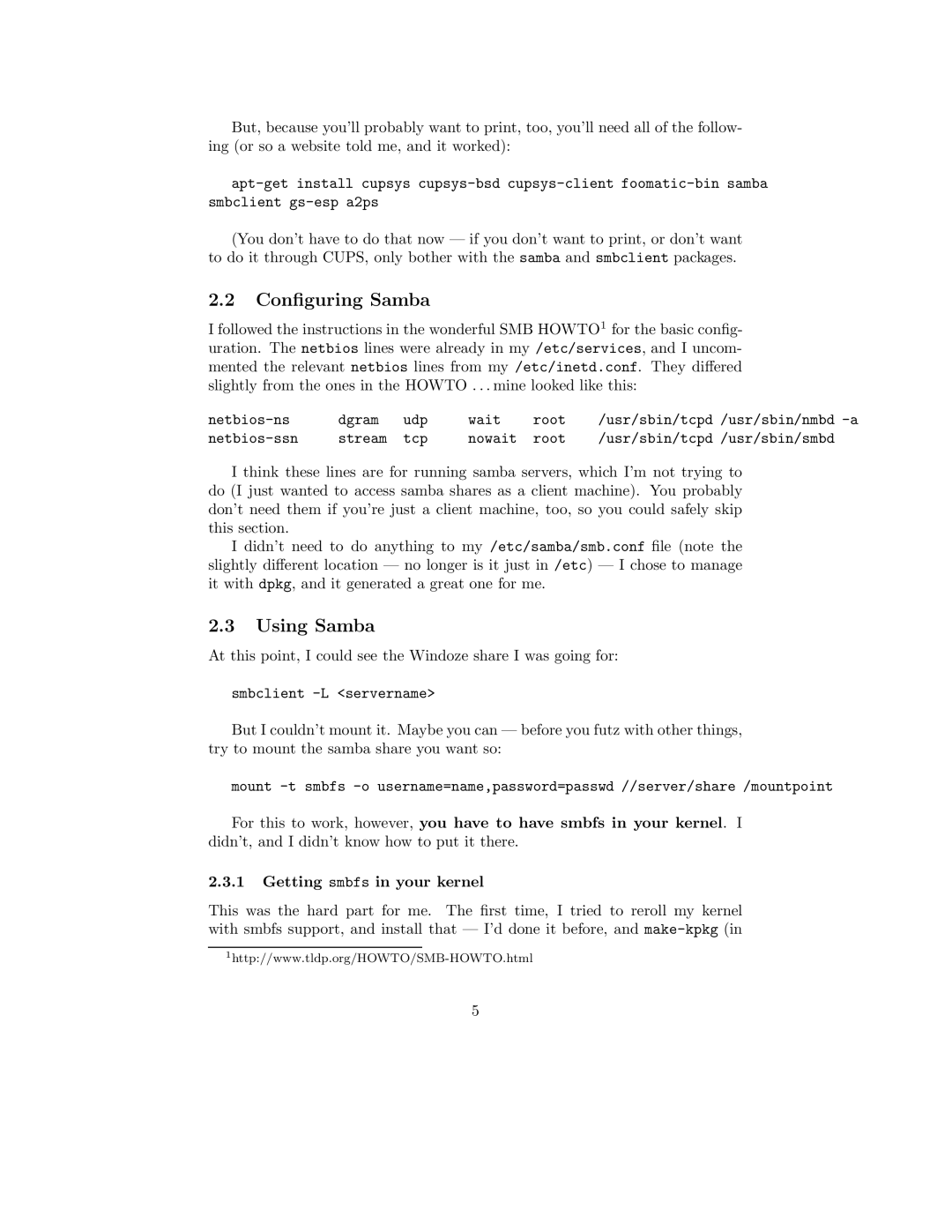But, because you’ll probably want to print, too, you’ll need all of the follow- ing (or so a website told me, and it worked):
(You don’t have to do that now — if you don’t want to print, or don’t want to do it through CUPS, only bother with the samba and smbclient packages.
2.2Configuring Samba
I followed the instructions in the wonderful SMB HOWTO1 for the basic config- uration. The netbios lines were already in my /etc/services, and I uncom- mented the relevant netbios lines from my /etc/inetd.conf. They differed slightly from the ones in the HOWTO . . . mine looked like this:
dgram | udp | wait | root | /usr/sbin/tcpd | /usr/sbin/nmbd | |
stream | tcp | nowait | root | /usr/sbin/tcpd | /usr/sbin/smbd |
I think these lines are for running samba servers, which I’m not trying to do (I just wanted to access samba shares as a client machine). You probably don’t need them if you’re just a client machine, too, so you could safely skip this section.
I didn’t need to do anything to my /etc/samba/smb.conf file (note the slightly different location — no longer is it just in /etc) — I chose to manage it with dpkg, and it generated a great one for me.
2.3Using Samba
At this point, I could see the Windoze share I was going for:
smbclient
But I couldn’t mount it. Maybe you can — before you futz with other things, try to mount the samba share you want so:
mount
For this to work, however, you have to have smbfs in your kernel. I didn’t, and I didn’t know how to put it there.
2.3.1Getting smbfs in your kernel
This was the hard part for me. The first time, I tried to reroll my kernel with smbfs support, and install that — I’d done it before, and
1
5
